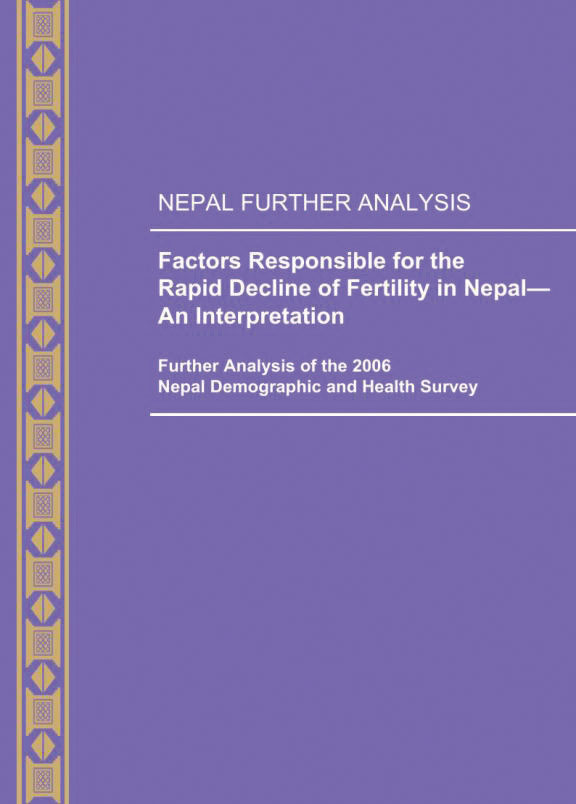- PUBLICATIONS
- JOURNAL ARTICLES
- ACCESS PUBLICATIONS
Publications Summary
- Document Type
- Further Analysis
- Publication Topic(s)
- Family Planning, Fertility and Fertility Preferences, Maternal Health
- Country(s)
- Nepal
- Survey
- Nepal DHS, 2006
- Language
- English
- Recommended Citation
- Karki, Yagya B., and Radha Krishna. 2008. Factors Responsible for the Rapid Decline of Fertility in Nepal— An Interpretation: Further Analysis of the 2006 Nepal Demographic and Health Survey. DHS Further Analysis Reports No. 52. Calverton, Maryland, USA: Macro International
- Download Citation
- RIS format / Text format / Endnote format
- Publication Date
- May 2008
- Publication ID
- FA52
Download
 Factors Responsible for the Rapid Decline of Fertility in Nepal - An Interpretation (PDF, 584K)
Factors Responsible for the Rapid Decline of Fertility in Nepal - An Interpretation (PDF, 584K)
